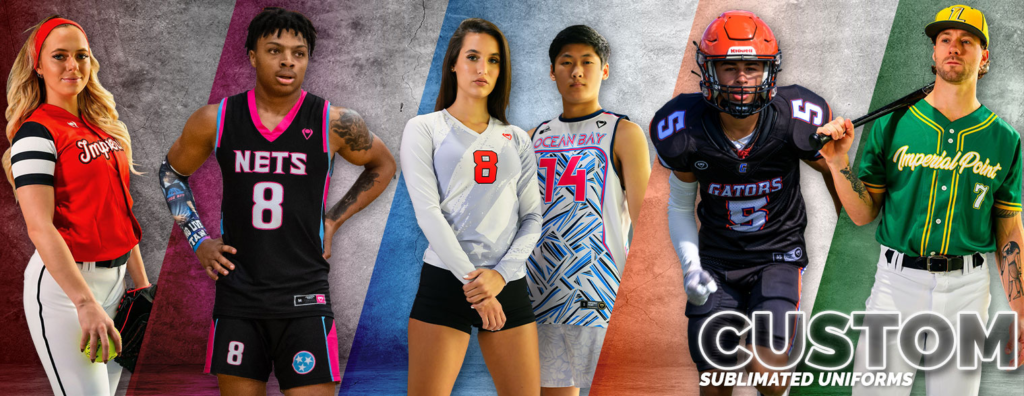Custom Uniforms: Tailoring Excellence for your Team
In today’s competitive landscape, a custom uniform serves as more than just a piece of clothing; it represents your team’s identity, professionalism, and unity. A well-designed uniform not only enhances the visual appeal of your team but also instills a sense of pride and belonging among its members. Whether for a sports team, corporate staff, or any other group, custom uniforms offer a range of benefits that can positively impact both the appearance and functionality of your team. The process of creating a custom uniform involves several steps, each crucial in ensuring that the final product meets the desired standards of quality and design. From selecting the right materials to choosing the appropriate colors and designs, every detail plays a role in crafting a uniform that stands out and serves its purpose effectively.

The journey begins with understanding the specific needs of your team. Different groups have different requirements, which can 印衫 influence the choice of fabric, design, and overall style of the uniform. For instance, a sports team may require moisture-wicking and breathable materials to ensure comfort and performance during physical activity. In contrast, corporate uniforms might prioritize a polished, professional look with high-quality fabrics that are comfortable for all-day wear. This initial step is essential as it sets the foundation for the rest of the design process.
Once the needs are established, the next phase involves selecting the right materials. The choice of fabric can greatly affect the comfort, durability, and appearance of the uniform. Common options include cotton, polyester, and blends that combine the best features of each. Cotton is known for its breathability and softness, making it a popular choice for everyday wear. Polyester, on the other hand, is valued for its durability and moisture-wicking properties, which are ideal for active environments. Blends offer a combination of benefits, providing both comfort and durability. The material choice should align with the specific requirements of the uniform’s intended use.
Color selection is another critical aspect of designing custom uniforms. Colors can convey different messages and emotions, and they play a significant role in branding and team identity. It’s important to choose colors that not only reflect the team’s brand but also are practical for the uniform’s use. For example, darker colors might be preferred for environments where uniforms are likely to get dirty, as they are more forgiving in terms of visible stains. On the other hand, bright colors can make a team more visible and create a vibrant appearance. The color scheme should complement the design and enhance the overall look of the uniform.
Design elements such as logos, team names, and other graphics are integral to custom uniforms. These elements help in branding and creating a cohesive look for the team. When incorporating logos or text, it’s essential to ensure that they are placed in a manner that is both aesthetically pleasing and functional. High-quality embroidery or printing techniques can be used to add these elements to the uniforms. The design should be clear, professional, and aligned with the team’s image and values.
The design phase also includes decisions about the cut and fit of the uniform. Comfort and practicality are paramount, as uniforms need to accommodate a range of body types and movements. Custom uniforms can be tailored to fit various sizes and shapes, ensuring that all team members feel comfortable and confident. The fit should allow for ease of movement without being too loose or restrictive. Additionally, options for adjustable features, such as elastic bands or adjustable cuffs, can enhance the fit and functionality of the uniform.
The process of creating custom uniforms involves collaboration between the team or organization and the uniform provider. Communication is key to ensuring that all preferences and requirements are accurately captured and implemented. It’s beneficial to work with a provider who understands the specific needs of your team and can offer expert advice on materials, design, and manufacturing processes. Many providers offer design mock-ups or samples, allowing you to review and make adjustments before finalizing the order. This step helps in achieving a uniform that meets your expectations and serves its intended purpose effectively.
Once the design is finalized and approved, the manufacturing process begins. The chosen materials are sourced, and the uniforms are produced according to the specifications. Quality control is an important part of this phase, ensuring that each uniform meets the desired standards in terms of fabric, stitching, and overall finish. The uniforms are then inspected and tested to confirm their durability and functionality before they are delivered.
Upon receiving the custom uniforms, it’s important to conduct a final inspection to ensure that everything meets the agreed-upon specifications. Check for any discrepancies in size, color, or design, and address any issues promptly. Proper care and maintenance of the uniforms are also crucial in preserving their appearance and longevity. Follow the care instructions provided by the manufacturer to ensure that the uniforms remain in good condition and continue to serve their purpose effectively.
In summary, custom uniforms are a powerful tool for enhancing the identity and professionalism of any team. From the initial design phase to the final product, every step plays a role in creating a uniform that is both functional and visually appealing. By choosing the right materials, colors, and design elements, and by working closely with a knowledgeable provider, you can ensure that your custom uniforms reflect the values and image of your team. Whether for sports, corporate settings, or other applications, a well-designed custom uniform can make a significant impact, fostering a sense of unity and pride among team members while presenting a polished and professional image to the world.
